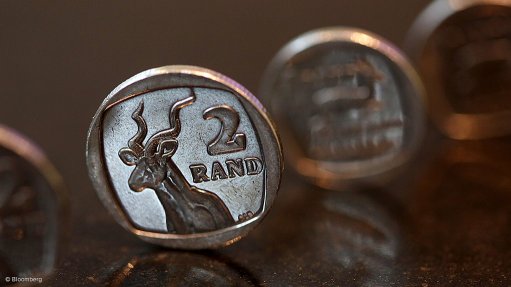New blending method may slash energy needed to produce bioethanol-enriched petrol by up to 40%
A simple petrol-ethanol blending method will reduce the energy required to produce a bioethanol-enriched petrol mix by between 17% and 40%, and can potentially be applied to other biofuel blends.
Three South African scientists – Dr Neil Stacey and Aristoklis Hadjitheodorou, of the University of the Witwatersrand, and Professor David Glasser, of the University of South Africa – propose that bioethanol produced from fermentation be blended with petrol without purifying the bioethanol, adding that this enables the final enriched-fuel product to be produced more energy efficiently.
Bioethanol is the most common biofuel produced in the world, with about 80-billion litres produced a year. However, questions of whether the energy content of the bioethanol produced is higher than the energy required to produce the fuel have persisted.
Fermentation, which is an inexpensive and the most common method of producing bioethanol from a large variety of biomass feedstocks, usually results in a bioethanol-water mixture containing between 6% and 27% bioethanol by volume.
Separating the water and bioethanol is usually achieved through distillation but is energy intensive, owing to the fact that the mixture is azeotropic, meaning that the mixed liquids have similar boiling points, making separation through distillation more energy intensive because two additional distillation processes must be used to separate the water from the bioethanol.
However, the scientists, highlighting that enriched fuel, not pure bioethanol, is the desired end product, have demonstrated that replacing the final purification step with a step to blend the bioethanol-water mixture with petrol causes a spontaneous liquid phase split in which an acceptable bioethanol-enriched petrol can be separated out.
Further, the scientists propose that a simple retrofit of existing bioethanol plants can enable these plants to use the new process and reduce their energy costs to produce a blended bioethanol-petrol fuel.
Specifically, Stacey, Hadjitheodorou and Glasser propose a two-stage countercurrent liquid-liquid extraction process be adopted. A single-stage phase split will produce a viable fuel, but ethanol recovery is not enough for the process to be economically feasible.
Their method could be applied to other biofuels, but they note that further research would be needed to determine which other biofuel production processes might benefit from this method.
By their estimates, the amount of energy saved by their method would be 0.916 MJ to 2.04 MJ per litre of ethanol produced.
“A two-stage countercurrent liquid-liquid extraction meets the requirement of suitability for retrofitting of existing plants with only minimal expense. “Equipment already in place is used for [much] of the separation, but the final purification is replaced with a two-stage liquid-liquid extraction to transfer ethanol into [petrol] in the overflow stream, while eliminating water in the underflow stream.”
The wastewater stream will still contain ethanol and should therefore be recycled to the distillation circuit, if possible, in order to improve overall ethanol recovery, the scientists note in their September research paper accepted for publication in the Energy and Fuels journal of the American Chemical Society.
South African legislation, which came into effect late last year, mandates 2% ethanol blending in all petrol. South Africa’s annual petrol consumption is ten-billion litres, translating into a potential market for bioethanol of around 200-million litres a year.
Article Enquiry
Email Article
Save Article
Feedback
To advertise email advertising@creamermedia.co.za or click here
Comments
Press Office
Announcements
What's On
Subscribe to improve your user experience...
Option 1 (equivalent of R125 a month):
Receive a weekly copy of Creamer Media's Engineering News & Mining Weekly magazine
(print copy for those in South Africa and e-magazine for those outside of South Africa)
Receive daily email newsletters
Access to full search results
Access archive of magazine back copies
Access to Projects in Progress
Access to ONE Research Report of your choice in PDF format
Option 2 (equivalent of R375 a month):
All benefits from Option 1
PLUS
Access to Creamer Media's Research Channel Africa for ALL Research Reports, in PDF format, on various industrial and mining sectors
including Electricity; Water; Energy Transition; Hydrogen; Roads, Rail and Ports; Coal; Gold; Platinum; Battery Metals; etc.
Already a subscriber?
Forgotten your password?
Receive weekly copy of Creamer Media's Engineering News & Mining Weekly magazine (print copy for those in South Africa and e-magazine for those outside of South Africa)
➕
Recieve daily email newsletters
➕
Access to full search results
➕
Access archive of magazine back copies
➕
Access to Projects in Progress
➕
Access to ONE Research Report of your choice in PDF format
RESEARCH CHANNEL AFRICA
R4500 (equivalent of R375 a month)
SUBSCRIBEAll benefits from Option 1
➕
Access to Creamer Media's Research Channel Africa for ALL Research Reports on various industrial and mining sectors, in PDF format, including on:
Electricity
➕
Water
➕
Energy Transition
➕
Hydrogen
➕
Roads, Rail and Ports
➕
Coal
➕
Gold
➕
Platinum
➕
Battery Metals
➕
etc.
Receive all benefits from Option 1 or Option 2 delivered to numerous people at your company
➕
Multiple User names and Passwords for simultaneous log-ins
➕
Intranet integration access to all in your organisation


















